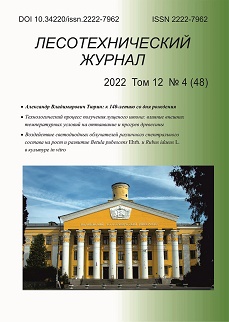Rostov-on-Don, Rostov-on-Don, Russian Federation
The article provides a detailed analysis of the composition and condition of the vegetation cover of individual old-growth artificial forest plantations of the Rostov agglomeration. Field studies of urban vegetation were carried out within the territories of the city of Rostov-on-Don: The Shchepkinsky Forest plantation, the Temernitskaya Grove city grove, the nursery of the Botanical Garden of the Southern Federal University, the park named after. N. Ostrovsky, park them. K. Chukovsky, Ordzhonikidze Park and forest plantation in Aksai. As part of the monitoring, geobotanical descriptions were carried out to assess the species diversity of tree species and subsoil herbaceous vegetation. It has been established that the largest contribution to the composition of the forest park zones of the cities of the South. Rostov-on-Don are introduced by adventive, synanthropic, cultigenic and weed vascular plants. The flora of the agglomeration today remains quite peculiar. Of the seven studied park and recreational zones, the largest floristic composition was noted for «Shchepkinsky Forest» and «Temernitskaya Grove» territories. Even though the Temernitskaya Grove is under anthropogenic pressure, its herbaceous cover is more diverse than in the Shchepkinsky forest. Healthy, weakened and strongly weakened state of the forest stand is noted in all plots. The most identical in systematic composition are very remote groups of park and recreational zones.
artificial forestations, abundance of plants, vegetation cover, ecological-cenotic groups, tree vitality, plant biodiversity
1. Alekseev V.A. Diagnostika zhiznennogo sostoyaniya derev'yev i drevostoyev [Lesovedeniye].1989; 4:38-53. (In Russ.).
2. Andreyev S.S., Andreyeva E.S. Bioklimaticheskaya kharakteristika Rostovskoy oblasti po indeksu patogennosti meteorologicheskoy situatsii [Izvestiya vysshikh uchebnykh zavedeniy]. Yestestvennyye nauki. Prilozheniye. = Natural Sciences. Application. 2003; 9:67-76.
3. Bukharina I.L., Zhuravleva A.N., Bolyshova O.G. Gorodskiye nasazhdeniya: ekologicheskiy aspect:monografiya [Izdatel'stvo «Udmurtskiy universitet»]. Izhevsk, 2012:206. EDN: https://elibrary.ru/QLDGOJ
4. Vel'ts N.Y., Lupova I.V. Opyt monitoringa fitobioty Yuzhnogo Priural'ya. Vestnik OGU № 10 (159) = Bulletin of OSU № 10 (159).2013:176-181. EDN: https://elibrary.ru/ROBJGH
5. Gorbov S.N. Genezis, klassifikatsiya i ekologicheskaya rol' gorodskikh pochv Yevropeyskoy chasti Yuga Rossii (na primere Rostovskoy aglomeratsii). Dokt, Diss. Moscow, 2018. 488 p. EDN: https://elibrary.ru/UDMCVH
6. Gudzenko E.O. Otsenka ekologicheskogo sostoyaniya zelenykh nasazhdeniy goroda Rostov-na-Donu. Dokt, Diss.: 03.02.08: zashchishchena 22.12.2016. Rostov-na-Donu, 2016. 188 p. EDN: https://elibrary.ru/GZYUYD
7. Gusev M.V., Melekhova O.P., Romanova E.P. Sokhraneniye i vosstanovleniye bioraznoobraziya: Seriya uchebnykh posobiy [Izdatel'stvo Nauchnogo i uchebno-metodicheskogo tsentra]. «Sokhraneniye bioraznoobraziya» = «Conservation of biodiversity». Moscow, 2002. 286 p.
8. Zasoba V.V. Formirovaniye osnovnykh komponentov bioty v iskusstvennykh lesnykh massivakh Rostovskoy oblasti [Izvestiya vysshikh uchebnykh zavedeniy]. Yestestvennyye nauki = Natural Sciences. North Caucasian region, 2009. Vol. 5. - P. 88-93. EDN: https://elibrary.ru/KYQSFV
9. Trutnev et al. Red book of the Russian Federation (plants and fungi) [Tovarishchestvo nauchynkh izdanii KMK]. MPR RF; Rosprirodnadzor; RBO; Moscow State University im. M.V. Lomonosova. Moscow, 2008. 855 p.
10. Red book of the Rostov region. Vol. 2. Plants and fungi. - 2nd ed. Minpriroly of the Rostov region. Rostov-on-Don, 2014. 344 p.
11. Roginskiy A.B. Gorodskaya flora i rastitel'nost' [Izdatel'stvo RGU]. Priroda Rostova = Nature of Rostov. Rostov-on-Don, 1999. 264 p.
12. Skripnikov P. N., Nalivaichenko A.A. Nakopleniye organicheskogo ugleroda pod drevesnymi rastitel'nymi soobshchestvami v gorodskikh lesakh Rostova-na-Donu [Materialy mezhdunarodnoy molodezhnoy nauchnoy shkoly-konferentsii]. Vosproizvodstvo, monitoring i okhrana prirodnykh, prirodno-antropogennykh i antropogennykh landshaftov = Reproduction, monitoring and protection of natural, natural-anthropogenic and anthropogenic landscapes: materials of the international youth scientific school-conference. Voronezh, 2021. P. 97-102. DOIhttps://doi.org/10.34220/RMPNNAAL2021_97-102. - EDN SPVPCQ.
13. Zozulin G.M., Fedyayeva V.V. Flora Nizhnego Dona (opredelitel'). Chast'1, chast' 2 [Izdatel'stvo RGU]. Rostov-na-Donu, 1984, 1985. 280 p. 240 p.
14. Khanina L.G., Zaugol'nova L.B., Smirnova O.V. i dr. Baza dannykh «Flora sosudistykh rasteniy Tsentral'noy Rossii». Available at: https://www.impb.ru/eco/search.php?s=a (accessed 1998-2022)
15. Shmarayeva A.N., Shishlova ZH.N., Fedyayeva V.V., Kuz'menko I.P. Konspekt flory ekspozitsii Botanicheskogo sada YUFU «Priazovskaya step'» [Izdatel'stvo Yuzhnogo Federal'nogo universiteta]. Trudy Botanicheskogo sada Yuzhnogo federal'nogo universiteta: monografiya = Proceedings of the Botanical Garden of the Southern Federal University: monograph. Vol. 1. Rostov-on-Don, 2016. P. 40-96
16. Abareshi F. et al. Association of exposure to air pollution and green space with ovarian reserve hormones levels //Environmental Research. - 2020. - T. 184. - P. 109342.
17. Abass Z. I. Green spaces in residential communities: the potential for ecological and health //IOP Conference Series: Earth and Environmental Science. - IOP Publishing, 2021. - T. 779. - №. 1. - P. 012011.
18. Abramov A. V., Pchelenok O. A., Kozlova N. M. On the Effect of Green Spaces on the Natural Risks Associated with Air Quality Decrease of the Urban Environment //IOP Conference Series: Earth and Environmental Science. - IOP Publishing, 2021. - T. 666. - №. 4. - P. 042029. DOI: https://doi.org/10.1088/1755-1315/666/4/042029; EDN: https://elibrary.ru/OEJCSM
19. Addas A., Maghrabi A. Role of urban greening strategies for environmental sustainability-a review and assessment in the context of Saudi Arabian megacities //Sustainability. - 2021. - T. 13. - №. 11. - P. 6457. DOI: https://doi.org/10.3390/su13116457; EDN: https://elibrary.ru/KDCYNJ
20. Aziz N. A. A. et al. Effectiveness of urban green space on undergraduates' stress relief in tropical city: A field experiment in Kuala Lumpur //Urban Forestry & Urban Greening. - 2021. - T. 63. - P. 127236.
21. Braun-Blanquet, J. 1951. Pflanzensoziologie // Grundzüge der Vegetationskunde, 2nd. ed. Springer, Wien. 631 pp.
22. Kasperidus, H.D. Stadte, Urbanisierung und Struktur der Stadt aus ökologischer Sicht / H.D. Kasperidus // Stadtökologie und Kleingarten - verbesserte Chancen für die Umwelt. - 2002. - S. 27-49.
23. Kostin M.V., Manaenkov A.S. Productivity and life length of oak (Quercus robur L.) artificial crop in the Northern Ergeny, Kalmykia // International Jubilee Scientific and Practical Conference on Innovative Directions of Development of the Forestry Complex, FORESTRY. - 2018. - Vol. 226.
24. Spektrum.de (Verloren im Grossstadtdschungel).- URL: https://www.spektrum.de/news/wie-das-leben-in-der-stadt-die-psyche-belastet/1718998.
25. Vasilieva E.A., Nikolaeva O.N., Trubina L.K. A case-study of tree inventory and mapping of public green spaces // International Conference on GI Support of Sustainable Development of Territories. - 2021. - Vol. 27. - P. 274-284. DOI:https://doi.org/10.35595/2414-9179-2021-3-27-274-284. EDN: https://elibrary.ru/JNLLDG
26. Whittaker R.H. Evolution and measurement of species diversity // Taxon, 1972. V. 21. No 2-3. P. 213-251.URL: https://doi.org/10.2307/1218190.












